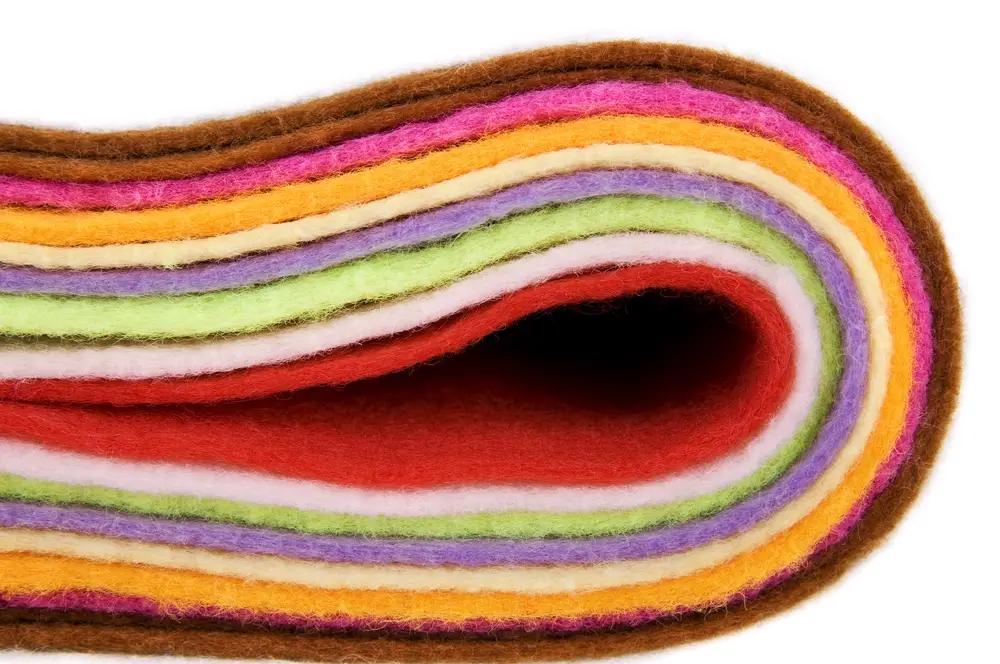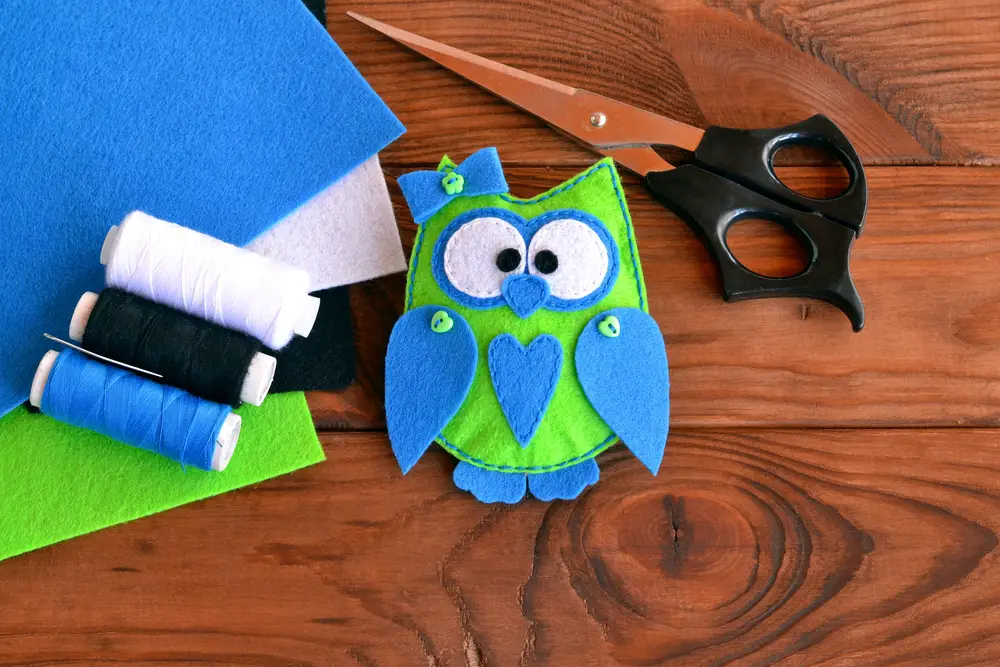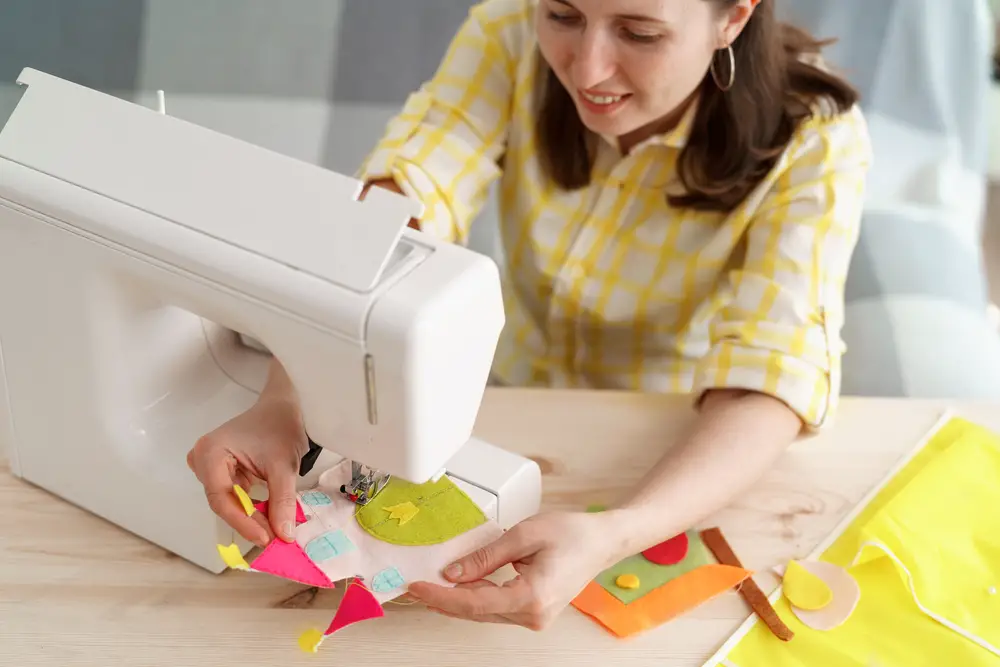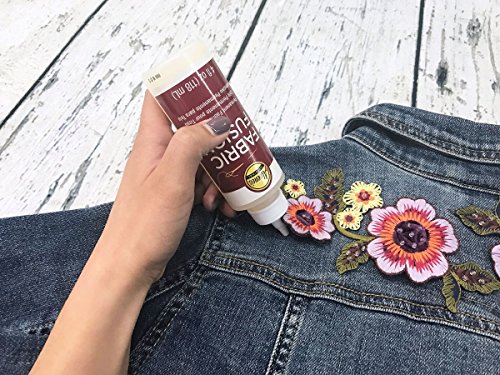You are in luck! You can use felt on your next sewing projects without having to hand stitch it (unless you want to hand stitch it)! But before you jump right in, there are a few things you need to know!
First, let’s go over what you are going to need. You will need the following:
- Correct thread
- Scissors
- Machine needle
- Felt
Typically, felt is a soft material that a regular sewing needle will be perfect for unless the felt is exceptionally thick or made from dense wool.
When you are picking out what type of scissors to use, put down the paper scissors. Always use fabric shears on felt! These shears will provide a clean edge and are also safer to use when cutting fabrics.
Table of Contents
Types Of Felt

Not all felt is created equal, and depending on the goal of your craft will determine which type of felt to get. To help organize the chaos, let’s break down each different type! Remember that these 3 listed below are just the tip of the iceberg!
- Craft Felt
- Eco-Friendly Felts
- 100% Wool Felt
Craft felt is the generic 100% synthetic, man-made felt that you find in most craft stores. It is best used for projects like children’s crafts, school or camp crafting, or seasonal holiday crafting!
Eco-friendly felt is made from post-consumer recycled plastic bottles. It looks and feels almost identical to traditional craft felt but is just slightly stiffer. Coincidentally, you can use it interchangeably with the traditional art felt!
100% wool felt is precisely how it sounds and is made of nothing else. With this type of felt, thickness becomes an issue. It can come in different thicknesses, including 1.2mm, 2mm, 3mm, and 5mm.
What Kind Of Thread Do You Use To Sew Felt?
Since the thread is a really important aspect of sewing felt, it needs its section! The most commonly used thread is cotton embroidery floss. It is flexible, colorfast, fade-resistant, soft, and comes in over 450 colors!
While it would be great to say the best thread is the one listed above, a few experts on sewing felt would like to argue that one. They have found that a general all-purpose polyester thread works great for sewing felt sheets together. And if that was confusing enough, others say that any cotton or cotton-blend thread is better depending on the felt you are using.
Now, if the plan is to do embroidering stitching, consider using a cotton or metallic thread. If you are not sure which one you should use, test out several different kinds on a scrap piece of felt! There will be some trial and error in the thread you use, so explore to see which one gives you the aesthetic you are hoping to achieve!
The moral of the story about your choice of thread is to test it out for yourself depending on what type of felt or what your goal in mind is!
Is Felt Easy To Sew?

Fortunately, felt s very easy to sew! Due to how thin felt is and the fact it is not woven, it makes it very easy to sew either by hand or even on a sewing machine. If your little ones, or even littles that aren’t your own, want to learn how to sew, it is a great material for them to learn on!
Is It Better To Sew Or Glue Felt?
Great question! Actually, there is no great answer on this one. It all comes down to preference and what project you are working on.
Sewing is a great option if you need a strong, durable fabric that you cant have come apart. Glue is excellent when you need a quick and easy way to attach pieces together. But if you choose to use glue, make sure you get the right kind!
There are multiple types of glue that you can use for felt including the following:
- Tacky glue
- Hot glue
- Permanent adhesive
Tacky glue is the true classic for gluing felt. It is kid-friendly too, which is a bonus! Tacky glue is thicker than ordinary Elmer’s glue, which helps the two pieces of felt adhere to each other better!
Hot glue is an absolute favorite across the board with the drawback being it isn’t so kid-friendly. The hot glue adheres to the felt very easily and dries in seconds! A plus about hot glue is that it is pretty darn cheap too!
Permanent glue, super glue, or E6000 are other terrific options for adhering felt together. Out of the options listed above, this will give you the strongest hold! The only downfall to it is you have to watch for the strong-smelling fumes and pay attention to the labels to use it in a well-ventilated area.
Should I Wash Felt Before Sewing It?
Great question! I am sure you have heard the rumors of your felt shrinking after you wash it and are a little concerned now. But to answer it, yes, you should wash felt before sewing it!
There are several different ways to go about washing felt; it can either be washed by hand or in a washing machine. It is important to note that regardless of which method you choose, make sure you read the label on the felt for washing instructions specific to the type of felt you picked out!
If you are washing your felt by hand, make sure you have warm (not hot) water and a tiny amount of gentle detergent on hand! The best results are seen when the felt is washed in lukewarm water and then laid out to try on a flat surface. Whatever you do, do not wring out your felt since it will result in warping the shape of the material!
If the washing machine feels like your best option, make sure you pay close attention here! Ideally, the only time you will utilize your washing machine for felt is when it is very dirty!
Before you press start, make sure the water is lukewarm and you have chosen a gentle cycle. As soon as the wash is finished, take your felt out and place it on a flat surface to dry. Don’t put it in the dryer; it will only cause the felt to shrink and start to fray!




